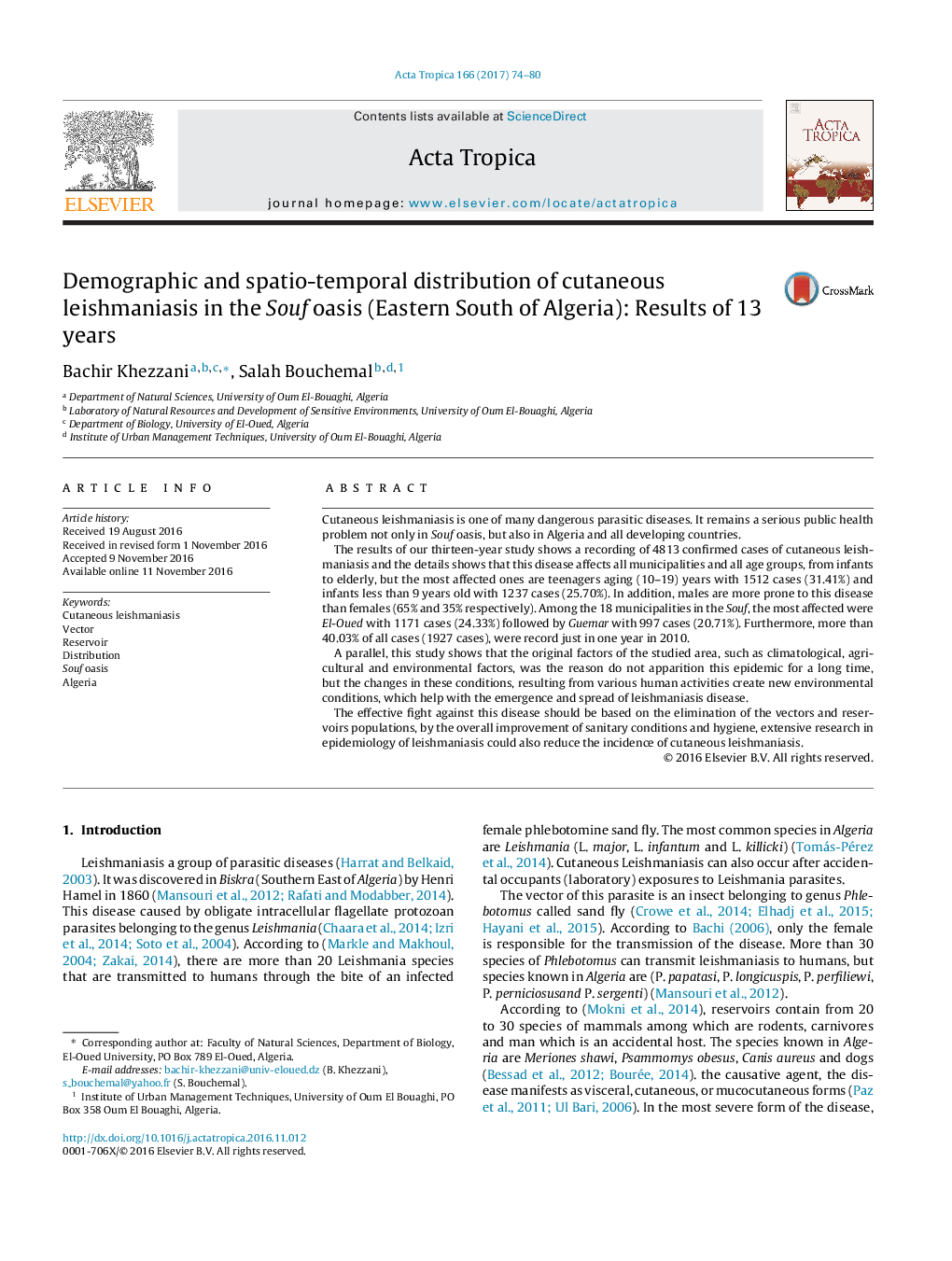| Article ID | Journal | Published Year | Pages | File Type |
|---|---|---|---|---|
| 5670892 | Acta Tropica | 2017 | 7 Pages |
â¢Cutaneous leishmaniasis is one of many dangerous parasitic diseases.â¢Cutaneous leishmaniasis spread in areas where conditions are favorable for reproduction and growth both of the vector and the reservoir.â¢Through various activities, humans can contribute to the spread of infectious diseases such as cutaneous leishmaniasis.â¢The spread of this disease has become a big problem for public health.â¢The elimination both of the reservoir and vector and improve the living framework is the only way to fight this epidemic.
Cutaneous leishmaniasis is one of many dangerous parasitic diseases. It remains a serious public health problem not only in Souf oasis, but also in Algeria and all developing countries.The results of our thirteen-year study shows a recording of 4813 confirmed cases of cutaneous leishmaniasis and the details shows that this disease affects all municipalities and all age groups, from infants to elderly, but the most affected ones are teenagers aging (10-19) years with 1512 cases (31.41%) and infants less than 9 years old with 1237 cases (25.70%). In addition, males are more prone to this disease than females (65% and 35% respectively). Among the 18 municipalities in the Souf, the most affected were El-Oued with 1171 cases (24.33%) followed by Guemar with 997 cases (20.71%). Furthermore, more than 40.03% of all cases (1927 cases), were record just in one year in 2010.A parallel, this study shows that the original factors of the studied area, such as climatological, agricultural and environmental factors, was the reason do not apparition this epidemic for a long time, but the changes in these conditions, resulting from various human activities create new environmental conditions, which help with the emergence and spread of leishmaniasis disease.The effective fight against this disease should be based on the elimination of the vectors and reservoirs populations, by the overall improvement of sanitary conditions and hygiene, extensive research in epidemiology of leishmaniasis could also reduce the incidence of cutaneous leishmaniasis.
